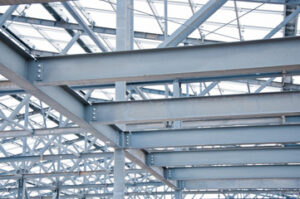Replacing your Windows Waukesha will improve energy efficiency, add a fresh new look and increase home value. Discover the benefits of this simple home improvement project:

There are many window types and styles to choose from today. Choosing the right one is all about identifying your priorities, goals and needs for your home.
Upgrading to replacement windows with high energy efficiency can significantly reduce your home’s energy consumption and utility bills. This is because efficient window glass and frames provide excellent insulation, allowing you to regulate indoor temperatures and reduce reliance on heating and cooling systems. Additionally, they are designed to be low-maintenance and durable, which makes them a good investment for homeowners seeking improved indoor comfort and increased property value.
The most important factor when choosing replacement windows for your home is their energy-efficient features. Efficient windows minimize heat transfer and help maintain a stable indoor temperature throughout the year, resulting in lower utility bills and enhanced comfort. This is possible thanks to innovative glass coatings and insulating materials that help keep air in the home during colder months and out during warmer ones.
Other factors that contribute to the overall energy efficiency of replacement windows include their frame material and deflection rate. Fiberglass and vinyl frames are incredibly durable, which allows them to retain their insulating properties even after years of use. Also, non-opening replacement windows have a lower deflection rate and therefore limit areas of potential air infiltration – a significant contributor to energy waste.
Another option that can greatly enhance your replacement windows’ energy efficiency is choosing double- or triple-glazed glass. This type of glass consists of multiple panes and insulating gasses, which helps to minimize thermal transfer and ensures that the interiors remain comfortable and cozy. This kind of glass is recommended for homes in climates with harsh weather conditions that require a higher level of indoor insulation.
While the choice of frame and glass is vital for achieving energy efficiency, you should also consider whether your home needs a full-frame or pocket installation. While both have their benefits, pocket replacement windows are particularly ideal for homes with existing wood casing and trim. This is because they allow for a seamless integration into your existing windows and can result in less damage to your home’s exterior.
For the best results, choose a replacement window that is made from extruded polyvinyl chloride (PVC), which is an extremely durable plastic that can withstand harsh weather conditions. The fact that this material is also recyclable makes it a great choice for environmentally conscious homeowners.
Increased Home Value
When homebuyers go looking for a new property, they are often drawn to houses that have recent upgrades. These can be as minor as a fresh coat of paint or as major as new replacement windows. When it comes to a return on investment, window replacements rank high among homeowner investments. Adding new windows to your home can increase the value of your property, and help you get the asking price for your house when it is time to sell.
One reason for this is that many new replacement windows are designed with energy efficiency in mind. This can save you money on your energy bills now and in the future. Plus, these windows can make your home quieter, and more comfortable in hot or cold weather.
As a result, your property will have more curb appeal and be an attractive prospect for potential buyers. Stylish, modern replacement windows can make your house stand out in the competitive Dallas real estate market. This is especially true when you choose double-hung windows, which have two movable sashes that open from both the top and bottom.
Another benefit of replacing your windows is that the new windows will provide better insulation against temperature changes and noise. This can be a big selling point, particularly for people who live near busy roads or loud neighbors. Newer windows also offer a greater ability to let in natural light, which can enhance the ambiance of your space and brighten up rooms.
New windows can give your property a fresh, updated look that is appealing to many different types of homeowners. They are available in a wide variety of shapes, sizes and styles, so you can find the perfect windows for your house. You can even customize the style to match your home’s architectural design, or create a more cohesive look with a single window style throughout your house.
When you choose the right windows for your home, you can add a touch of luxury that will impress guests and prospective buyers. You can even choose custom window shapes to highlight a beautiful view or create more visual interest in your living spaces.
Increased Curb Appeal
The curb appeal of your home is the first impression that visitors will get, and it’s an important factor in determining how much interest your property generates. It’s why many homeowners take steps to improve their home’s exterior, with one of the most effective upgrades being replacement windows. These windows have a major impact on your home’s aesthetic and can instantly enhance its curb appeal.
The type of window you choose will have a significant impact on your home’s appearance, with each style offering its own unique look and charm. For instance, double hung windows are available in a wide variety of frame colors and finishes. They also feature options like decorative glass and grids that allow you to customize your windows with an eye-catching design to match your home’s architectural style.
Another great thing about replacement windows is that they can be installed with minimal disruption to your existing window frame. The majority of these windows are designed to fit into pre-existing window holes, which means they can be replaced without tearing down walls or other significant renovations. This can help you avoid costly construction work and keep your project on schedule.
As a result, your new windows will not only make your home more energy efficient but will also improve its curb appeal. With their sleek design, they will provide a more modern appearance that will make your home stand out among the neighborhood. Additionally, with the right selection of windows, you can create a style that will blend seamlessly with your home’s existing architecture while providing an appealing design for your visitors and potential buyers.
Enhanced curb appeal is just one of the many benefits that come with installing Pleasanton, CA replacement windows. Other benefits include increased home value and reduced maintenance costs. However, it’s essential to note that you’ll want to do your research before choosing the perfect replacement windows for your home.
If you’re interested in upgrading your windows, contact the pros at Window Nation for a free estimate. Our experts can help you choose the best replacement windows for your home, helping you achieve the look and feel you desire while making the most of your investment.
Less Maintenance
When windows need to be repaired, it can become a significant financial commitment. However, replacing them is a smarter long-term investment that will pay off in the form of lower maintenance costs. Newer window materials like fiberglass and composite require significantly less care than traditional wood. In addition, replacement windows often include energy-efficient insulation that further reduces your home’s heating and cooling bills.
While you can do your part by regularly cleaning and repairing your windows, if they reach the end of their lifespan, it’s time to invest in replacement. Common signs that your windows are beyond repair include visible cracks and condensation between window panes. If left unaddressed, these problems can lead to water seepage, mold, and pest infestation. They may also leave your home vulnerable to break-ins by making it easier for criminals to gain access.
Replacement windows install easily into pre-existing window openings, minimizing the amount of labor required and reducing installation costs. They also offer a precise fit that enhances both the appearance and performance of your home. The first step is to carefully remove the existing window sash from its frame. This can be done by using a utility knife to cut through any caulk or sealant that is holding it in place. Once the old window is removed, the window opening should be cleaned to remove any debris and to ensure that the new window will install properly.
Whether you are planning a renovation or preparing your home for the real estate market, upgrading your windows is a great way to increase your property value. New windows that meet the latest energy efficiency standards are a desirable feature for potential buyers, and they will help to improve your home’s overall comfort and aesthetic.

